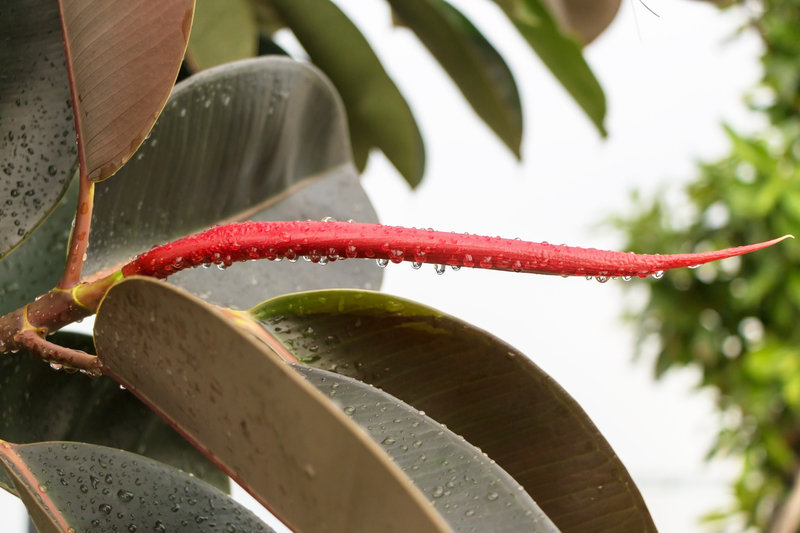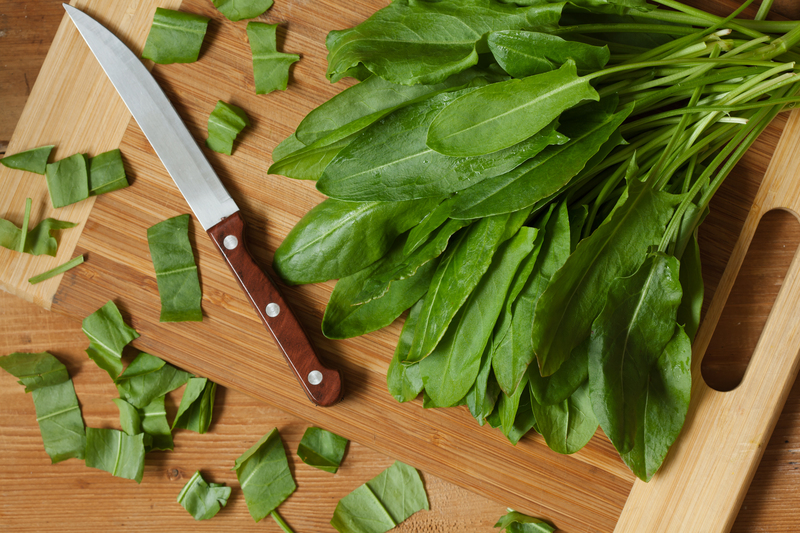Winterizing Your Garden: Essential Tips to Protect Your Plants
Posted on 12/09/2025
Winterizing Your Garden: Essential Tips to Protect Your Plants
As the chilly season approaches, smart gardeners begin to think about how to winterize their gardens to ensure their beloved plants survive--and even thrive--despite frost, wind, snow, and dropping temperatures. Successful winter plant care doesn't have to be complicated, but it does require planning, knowledge, and action before the first hard freeze arrives.
This comprehensive guide offers essential tips to protect your garden during winter. You'll learn how to prepare different types of plants for the coming cold, utilize effective frost protection techniques, maintain soil health, and foresee common winter hazards. Whether you're facing mild chills or prolonged freezes, these expert-approved strategies will help your garden burst back to life when spring returns.
Why Is Winterizing Your Garden Important?
- Protect Sensitive Plants: Not all vegetation is built to withstand cold snaps, frost, or snow cover.
- Preserve Soil Structure and Health: Winter can erode nutrients and compact the soil.
- Save Money and Effort: Winterizing can prevent costly plant replacement and tedious spring clean-up.
- Support Local Wildlife: Proper protection offers shelter for beneficial insects and birds.
- Ensure a Quick Spring Start: Well-prepared gardens recover more rapidly and flourish when warm weather returns.
Winter garden preparation should begin well before the first hard frost. Taking these steps now means less damage and more blooms--and produce--next year!

Understanding Your Local Climate and Hardiness Zone
The first step in winterizing your garden is knowing your local climate and USDA Plant Hardiness Zone. Different plants have varying degrees of cold tolerance, so your approach must be tailored:
- Zone 3-5: Coldest levels; deep freeze and lengthy snow cover
- Zone 6-7: Variable cold; occasional severe freezes and thaws
- Zone 8+: Mild winters; rare hard frost events
Consult your region's average first and last frost dates. This calendar will guide when to take action for winter plant protection.
Mulching: The Gardener's Primary Shield
Mulching is a top method for protecting plants from frost and harsh winter elements. It helps insulate roots, regulate soil moisture, and prevent deep freezing.
How to Apply Mulch for Winter
- Material: Use bark chips, straw, shredded leaves, or pine needles. Avoid using whole leaves as they mat and suffocate soil.
- Timing: Mulch after the first light frost but before the ground freezes. This traps warmth without inviting rodents.
- Coverage Depth: Generally, 2-4 inches is ideal, taking care to leave a small gap around stems or trunks to prevent rot.
Winter mulching protects perennial beds, vegetable gardens, and even tender shrubs.
Pruning and Cleaning: Tidying Up for the Cold
- Remove diseased material: Cut away dead, diseased, or damaged stems, as these invite pests and fungi.
- Leave some seed heads: These can provide winter interest and food for birds, especially in ornamental gardens.
- Cut back perennials: For most, trim down to a few inches above the soil; research specific care for rose bushes or tender bulbs like dahlias.
- Clear up debris: Fallen fruit and foliage can harbor overwintering pests and diseases.
A clean garden is a healthy garden--less susceptible to problems in the dormant months.
Protecting Tender Plants
Some plants require additional measures when you're winterizing your garden:
- Wrap with Burlap: Tropical shrubs, roses, and evergreens benefit from burlap wraps, which break wind and block harsh sunlight on frigid days.
- Move Potted Plants: Relocate movable pots to a garage, shed, or indoors. Cluster those that stay outside together in a sheltered spot and add extra mulch.
- Insulate with Cloches: Use bell jars, old milk jugs, or commercial cloches to shield single plants from overnight frost.
- Blanket on Frost Nights: Cover delicate beds with floating row covers, old sheets, or frost fleece. Remove during the daytime to prevent overheating.
If you protect plants from freezing with these methods, their chances of survival are dramatically improved--especially for marginally hardy varieties.
Caring for Trees and Shrubs in Winter
Trees and shrubs anchor your landscape, providing shade, beauty, and habitat. They also need special consideration during winterizing:
- Water deeply before ground freezes: Well-hydrated roots are more resilient to cold.
- Mulch generously around dripline: This insulates root zones and keeps moisture steady.
- Wrap young tree trunks: Use a white, commercial tree wrap or spiral guards to deter rodents and prevent sunscald.
- Prevent snow breakage: Tie together upright evergreens and gently brush heavy, wet snow off branches to avoid splitting.
Taking these steps ensures your landscape's backbone survives winter's worst.
Winterizing Flower Beds
- Deadhead annuals and clear them out: Leaving spent annuals can invite pathogens.
- Mulch perennials: After cutting them back, insulate with a thick mulch layer.
- Stake tall flowers: Helps prevent wind damage or collapsing stalks in snow.
- Sow spring bulbs: If planting tulips, daffodils, or hyacinths, do so before hard frost sets in.
Well-prepared flower beds will reward you with vigorous growth and earlier blooms next spring.
Winterizing the Vegetable Garden
If you want a bountiful spring, take time now to prepare your vegetable garden for winter:
- Harvest Remaining Crops: Pick everything mature and pull spent plants.
- Apply Organic Amendments: Compost, well-rotted manure, or leaf mold can be dug in to enrich next year's soil.
- Sow Cover Crops: Plant winter rye, clover, or vetch to prevent erosion, improve soil fertility, and suppress weeds.
- Protect Structures: Drain and store hoses, tools, and irrigation systems to prevent cracking from freezing water.
Winterizing your vegetable plot now means less labor in spring and healthier, more productive crops.
Caring for Container Plants in Winter
Container and patio gardens are especially vulnerable because their roots are exposed on all sides. Protect them by:
- Grouping pots together: Place against south- or east-facing walls for extra warmth.
- Elevating pots: Put containers on pot feet or stones to prevent ice buildup under the base.
- Wrapping containers: Bubble wrap, hessian, or thick fabric prevents soil from freezing and cracking the container itself.
- Mulching surface soil: Just as in beds, mulch helps insulate roots.
Remember to reduce watering--not as much evaporation occurs in cold conditions.
Soil Maintenance and Protection
Cold, wet winters can deplete nutrients, compact soil, and encourage erosion. Here's how to protect your garden beds:
- Add organic matter: Compost, shredded leaves, or seaweed help maintain aeration and fertility.
- Mulch exposed soil: Prevents runoff and the leaching of nutrients.
- Plant ground covers: These blanket bare spots, holding soil in place and discouraging early spring weeds.
Healthy soil is the foundation for next year's garden success!
Additional Tips: Landscaping Elements and Garden Features
- Safeguard water features: Drain or use de-icers in fountains and ponds. Remove pumps and store indoors if possible.
- Secure garden ornaments: Move fragile pots, statues, and furniture to sheltered locations.
- Clean and oil tools: Prevents rust and ensures everything is ready for the next season.
- Label plants: Use weatherproof markers to locate perennials and bulbs before they emerge in spring.
Comprehensive winter garden preparation includes your entire landscape--not just plants!
Common Winter Hazards and How to Prevent Them
Frost Heave
Problem: Freeze-thaw cycles push shallowly rooted plants out of the soil.
Solution: Mulch well and firm the soil around plants after the first hard frost.
Rodent Damage
Problem: Mice and voles may chew plant bases under the protection of deep mulch or snow.
Solution: Place wire mesh or tree guards around vulnerable trunks, and avoid piling mulch directly against stems.
Waterlogged Soil
Problem: Excess rain or melting snow can suffocate roots.
Solution: Improve drainage in vulnerable spots, and avoid compacting wet soil by walking on it.
Snow and Ice Breakage
Problem: Heavy accumulation can split tree and shrub branches.
Solution: Gently shake or brush off snow after storms; tie upright shrubs loosely with twine.
Planning for Spring: Get a Head Start
- Order seeds and start planning next year's plots.
- Monitor overwintering plants: Occasional checks can catch damage early and avert loss.
- Note successes and challenges: Keep a winter garden journal for reference.
Winter is a season of rest, but also of renewal for the serious gardener.

Frequently Asked Questions About Winterizing Gardens
Is it okay to fertilize plants before winter?
It's best to avoid fertilizing after midsummer, as this can encourage late, tender growth vulnerable to cold. Instead, apply compost or organic mulch to enrich the soil slowly.
Should I water my garden in winter?
If your region is dry during winter, water garden beds and trees deeply before the ground freezes. Overwatering during cold, wet weather, however, should be avoided.
Do all plants need to be covered?
No, cold-hardy perennials and many shrubs don't require covering. Focus your efforts on tender annuals, young trees, and tropical or marginally hardy varieties.
Conclusion: Winterizing Your Garden for Resilience and Beauty
Properly winterizing your garden is the key to nurturing strong, healthy plants that survive winter's toughest challenges. By using mulch, pruning, covering tender vegetation, and maintaining soil health, you safeguard your landscape and ensure an easy, beautiful spring revival.
With these essential winter garden protection tips, your plants, soil, and even your garden ornaments will emerge unscathed and ready for another season of growth. Act before the frost bites, and enjoy the peace of mind that comes from expert preparation. Happy gardening--even in winter!



